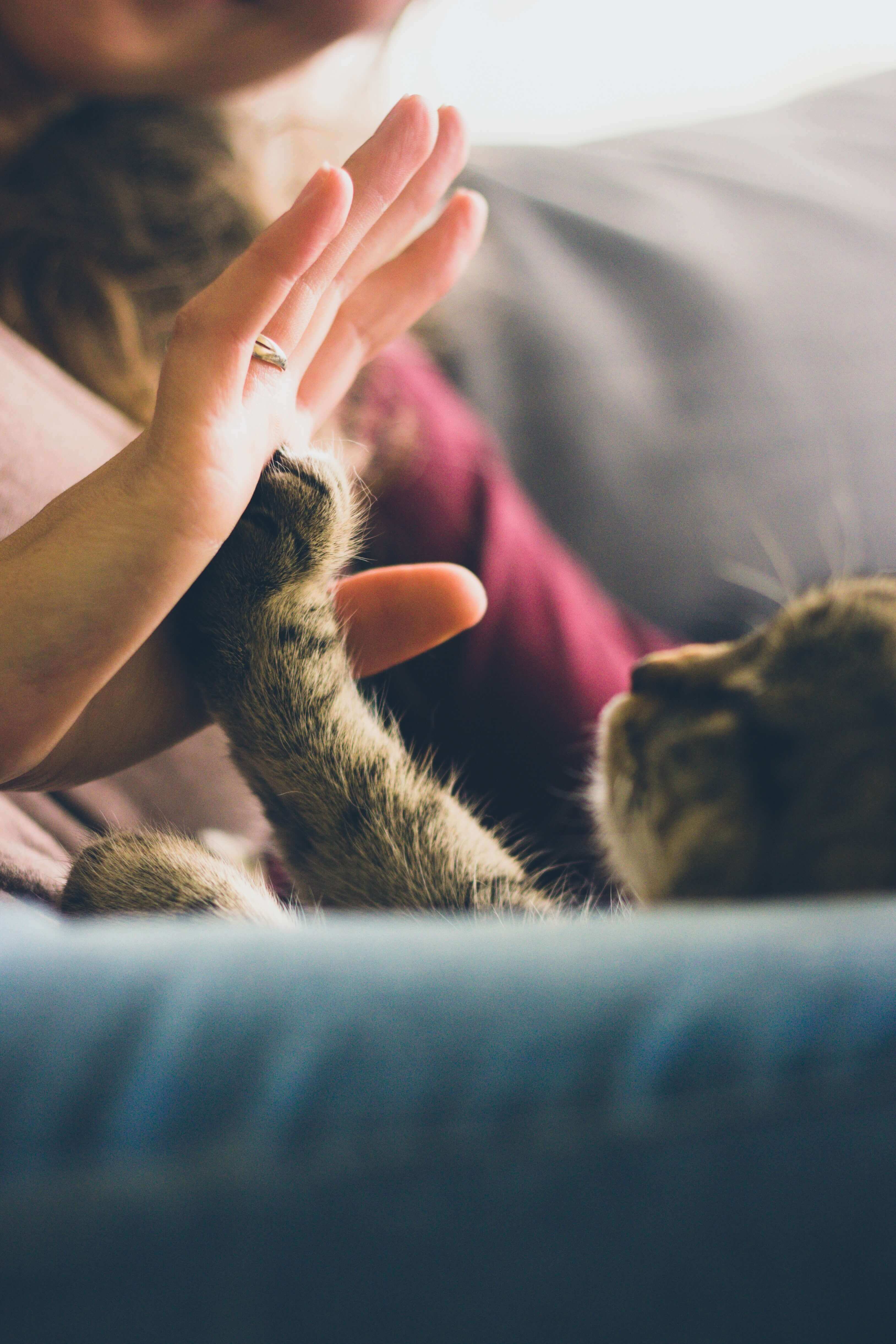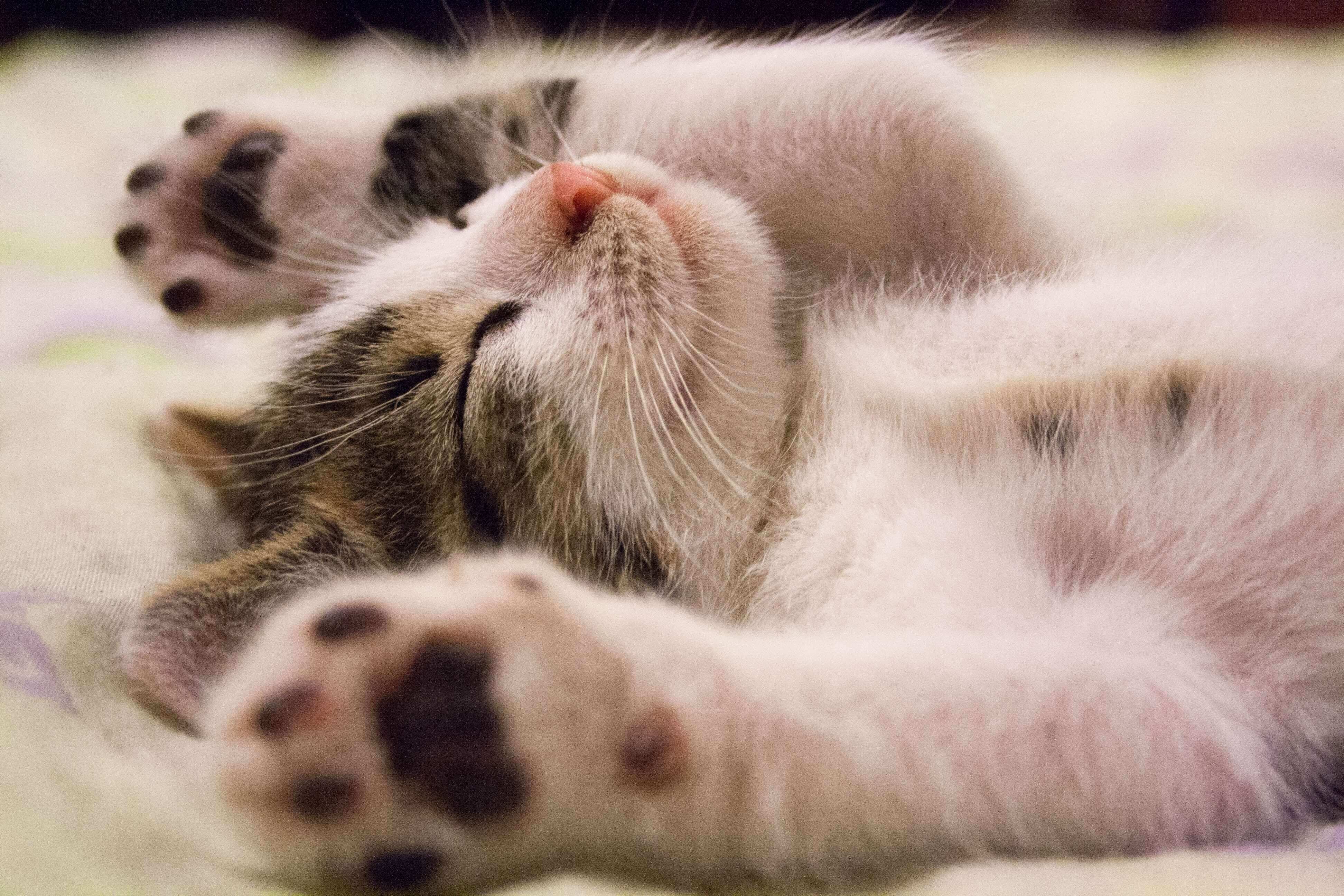A part of normal cat behavior is their instinctive need to scratch on surfaces to remove excess claw material and keep the nails clean and in good shape. Cats obviously enjoy this behavior and certainly are not aware that their behavior may be seen as destructive to their owners. Unfortunately while your cat is happily clawing on your favorite chair furniture, you may be grimacing and very unhappy with one of your favorite family members.
It is our goal to help you to guide the behavior of your kitten or cat to use approved surfaces so that everyone can live together in harmony. We will work with you to explore all options for ensuring your cat's scratching is contained only to appropriate surfaces.

Owners may eventually decide to declaw their cat for reasons such as:
- Medical concerns for humans in the household, which also could prevent giving the cat up for adoption
- An unchangeable living situation in which the cat's social behavior is not conducive to the constraints of the household, which also could prevent giving the cat up for adoption
Some reasons that may cause you to decide against declawing your cat include:
- Declawing a cat goes against its natural behaviors and instincts
- It is an unpleasant experience for the cat, despite appropriate pain medication
Whatever your reasoning may be, we are here to support you and ensure that the best interests of your cat are a priority.
Alternatives to declawing cats
There are several alternatives to declawing cats, although effectiveness may vary depending on a cat's age and temperament. Some of the more prevalent alternatives to declawing cats are:
- Behavioral Training
- Soft Claws
- Frequent Nail Trimming
- Toys/Scratching Post
- Synthetic facial pheromone sprays/diffusers
- Appropriate environmental enrichment
As always, we encourage you to seek consultation with an ITAH veterinarian regarding any declawing procedure or alternative treatment.

Understanding the procedure for declawing cats
As veterinary care providers we are here to help provide you with accurate and unbiased information about declawing cats in order for you to make an informed, educated decision on behalf of your furry feline friend.
Declawing kittens or adult cats requires the removal of the claw. Because the claw is permanently affixed to a cat's knuckle, this also means removing all or part of the third bone from a cat's paw.
Does declawing a cat affect its personality?
Numerous studies that have researched a potential correlation between cat declawing and personality changes strongly indicate that none exists. Please remember that it may take your cat a little time to feel comfortable walking on surgically sensitive paws, which could indeed affect his or her personality traits and behaviors during the recovery period. Therefore, it is always important to be nurturing and supportive during the recovery process, in order to help facilitate a speedy recovery.
Should declawed cats be allowed to go outside?
Letting your cat outside after he or she is declawed could be dangerous, because declawing a cat takes away the ability to defend themselves. Therefore, cat owners of declawed cats should be committed to keeping their feline friend indoors for the rest of his or her life.
Schedule an appointment to discuss options with your veterinarian
At Indian Trail Animal Hospital, our veterinary team has provided education and insight to help many concerned and caring cat owners decide if declawing a cat is the right decision for you and your feline friend. If you are looking into cat declawing surgery, or have any questions about declawing cats, please contact us to schedule an appointment with a member of our veterinary team today.
